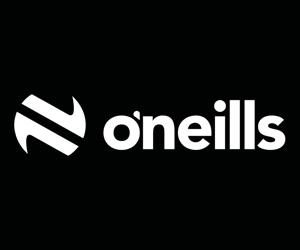Fermanagh Gaelic Athletic Association is one of the county boards of the Gaelic Athletic Association in Ireland and is responsible for the administration of Gaelic games in County Fermanagh.
County Committee & Sub Committees
Fermanagh GAA Strategic Plan
Brief History of Fermanagh GAA
Before the County Board
There are various accounts of traditional Irish games being played in Fermanagh in the 19th century. Camans (from the Gaelic for Hurley) was played in the Tempo / Coa area with a ball known as a nig or neug. Master Hugh Rooney from St Tiemey’s P.S Mullaconnolly recalls “Camans was played by the young in my youth but it was a rather primitive form of the game which we played, the caman coming from the nearest hedge and the ball a lump of any convenient material, like wool, a large spool or a ball made of hay or straw.” It is also known that camans was played in the Newtownbutler and Lisnaskea areas. The Gaelic revival at the end of the century meant that G.A.A activity was welcomed in the county with open arms despite the existence of other team ball games. By 1884 there was a genuine interest in all things Irish and the G.A.A was seen by many as the one organisation that could harness this interest into productive Irishness not just for the national games, but with respect to our language and customs too.
It is generally accepted that the first G.A.A club in Ulster was founded in 1886 in Ballyconnell Co. Cavan, while the first club in Fermanagh was set up in Newtownbutler the following year and took the name Newtownbutler First Fermanagh’s. Other clubs to exist in the early years of the Association in Fermanagh include Clonmaulin, Donagh, Roslea Fag a Bealaghs, Drumlone Lough Eme Leaguers and Derrylin Mitchell’s. By 1888 there was a total of 15 clubs operating. However clubs tended to appear and disappear on a regular basis due to the logistical and demographic difficulties of running small rural clubs. With no County Board in existence the clubs would organise challenge matches between each other, where big crowds were expected especially for derby matches. These games often coincided with other events in the parish to maximise turnout and gate receipts. County boundaries were ignored and tournaments between neighbouring clubs were often played on one day. The records show that Newtownbutler First Fermanagh’s won the 1888 Belturbet tournament.
Games in the pre-County Board era were very different to what we see in 21st Century Ireland. The full forward was often known as the charger due to the methods he would employ to score a goal. The equivalent of modern day cheerleaders would attend matches and travel with the team. After the match the home team traditionally provided supper for the travelling team. This was very welcome as some of the travelling team may have walked 15 miles to attend the game. Without a County Board there was no discipline structure in place so rough games were common. The standard of refereeing and playing fields also left a lot to be desired at times. The RIC took a keen interest in membership and monthly reports were sent to Dublin Castle detailing G.A.A activity in the area.
There was also widespread opposition to the G.A.A from the church hierarchy due to the large numbers of IRB members in the G.A.A. However at local level politics, sport and religion were often intertwined. There was a hostile climate surrounding Association activity in 1889 and the diocese forbade attendance at G.A.A meetings, because they felt these meetings were being used to foster secret societies. As a result of this and other political reason there was a steady decline in support of the organisation but the RIC was still able to name 11 clubs that existed in 1890, namely Roslea Fag a Bealaghs, Drumshancorick Faughs, Lisnaskea Tones, Clonmaulin Sons of Erin, Cloone Owen Roes, Hugh O’Neill’s, Kinawley Brian Borus, Killymacklin Sarsfield’s, Derrylin Mitchell’s, Derrymacausey Grattans, and Drumadoney Slashers.
In the years that followed the G.A.A was in turmoil nationally. In 1896 only 19 clubs were in existence in the whole country, one of these undoubtedly had a strong Fermanagh contingent though the St Patrick’s club from Currin straddles the Monaghan / Fermanagh county boundary. Only sporadic activity took place in the county prior to 1903 with teams being formed for occasional challenge matches.
The First County Board
The start of the 20th century saw a renewed vigour in the Gaelic revival and Douglas Hyde called on members of the Gaelic League and the G.A.A to foster better relations as they both had a common goal. The improved levels of literacy were beneficial to the Irish language while the Wyndham act and other land purchase laws, allowed the native Irish to purchase property.
This background meant it was a more favourable climate for the G.A.A to re establish itself in the county. In 1902 The Donagh Sons of Erin were revived by P.L Mc Elgunn and Teemore Shamrocks were formed by former members of the Derrylin Mitchell’s club. A Hurling club was also formed in Enniskillen although the local press were rather pessimistic of its chances of survival. The Ulster Council was formed on the 23rd of March 1903 and Fermanagh had its first County Feis. The Enniskillen O’Neill’s club was formed that year and played Manorhamilton as no local opposition was available; the result was a victory for the Erne siders on a score of 1-5 to 0-1 on the 27th of December 1903.
1904 was to be an historic year for the Association in Fermanagh. In April the following teams were thought to exist Teemore Shamrocks, Donagh Sons of Erin, Enniskillen O’Neill’s, Ashwoods Maguire’s, Coa O’Dwyer’s, Belnaleck, Lisnaskea, Lough Erne Leaguers and Drumacausey. A meeting to form a County committee was held in Enniskillen on July 4th 1904. 4 clubs were represented Ashwoods Maguire’s, Belnaleck Art Mc Murrough’s and Enniskillen O’Neill’s Hurling and Football clubs. J. Grimes (O’Neill’s Hurling) seconded by J. Owens (Belnaleck) proposed the formation of the County Board. The committee that was elected comprised Chairman: R. A. Whyte, Vice-Chairman: J. Flanagan (Ashwoods), Secretary: R. Corrigan (Belnaleck) and Treasurer: J. Hackett (O’Neill’s Football). Others who are known to have attended this meeting include S. Nethercott, T. Mc Manus, C. Mc Keown, M. Sweeny, T. Whyte, J. Calligan and J. Mc Manus.
4 teams entered the Football Championship that year, namely Teemore Shamrocks, Donagh Sons of Erin, Belnaleck Art Mc Murrough’s and Enniskillen O’Neill’s. The first game in the competition was refereed by the County Chairman on September 4th. Teemore were victorious on the day and their team was made up of the following players T. Clarke, B. Kelly, T. P. Clarke, M. Hughes, P. Cox, L. Clarke, F. Curry, O Mc Aloon, P. Curry, R. Cox, F. Mc Manus, D. Reilly, M. Martin, T. Boyle, M. Martin, P. Connolly, and J. Curry. The 17 men who were on the losing Donagh side were P. Faulkner, J.Harte, C. Mc Manus, T. Martin, M. Mc Donnell, W. Farrell, P. Maguire, G. Wilson, J. Maguire, T. Maguire, J. Maguire, P.Martin, P. Maguire, J. Reilly, M. Mc Manus, E. Todd, and M. Jones. Teemore went on to win the Championship that year while O’Neill’s captured the hurling title.
January 1905 saw Fermanagh’s first game in the Ulster Senior Football Championship, (the 1904 Championship). Terry Clarke of Teemore was Fermanagh’s only scorer as they lost to Monaghan 0-4 to 0-1. The first team to represent Fermanagh in the Ulster Championship lined out as follows: E. Mc Gurn (Shamrocks), P. Sheehan (O’Neill’s) C. Murphy (Mc Murrough’s), F. Curry (Shamrocks), J. Reilly (Sons of Erin), J. Mc McCarthy (O’Neill’s) G. Wilson (Sons of Erin), N. Corrigan (Mc Murrough’s), M. Martin (Shamrocks), N. Corrigan (Mc Murrough’s), H. Murphy (Mc Murrough’s), B. Kelly (Shamrocks), Terry Clarke (Shamrocks), Tommy Clarke (Shamrocks), J. Martin (Shamrocks), M. Mc Manus (Sons of Erin), and P. Faulkner (Sons of Erin). Fermanagh’s hurlers were well beaten 35 points to 7 at Armagh that year. Despite these losses Ulster’s Railway Cup teams had Fermanagh representation in Bob Whyte, P. Sheehan and T.Clarke.
Fermanagh exited the 1905 Football Championship on the same score line; this time Cavan were the victors in Derrylin, while the hurlers went down 30 points to 6 against Tyrone who played with 17 men against Fermanagh’s 10. These losses did not hinder club progress though and the 1905 convention saw 10 teams represented. The Hurling Championship had 3 entrants while 7 clubs competed for the Football title.
Matches were fixed for mid-week evenings to appease the church hierarchy and many teams played in their ordinary clothes. Before a match could commence each player was required to show his boots to the referee as iron toe boots were banned. Horse drawn wagonettes were often used to transport teams. On long journeys teams often stopped en route to attend mass and give the horses a rest; these journeys often used to involve a sing song too. The most common cause of dispute at this time was over pitch measurements.
The 1906 convention saw the registration of Irvinestown St Molaise, Kinawley O Connell’s Lisbellaw Red Hands, Newtownbutler Celtic and Knockninny Harps. Later that year Roslea Shamrocks and Tempo Eire Og came on board. As a result the county was split into two divisions, North and South. Clubs were allowed to field 15 players if 17 were not available. Opposition from the clergy began to subside at this time as clubs helped fund new church buildings.
The popularity of the national game was having an adverse affect on local soccer competition, so much so that £50 was given to help local soccer and areas of Donegal, Leitrim and Sligo were allowed compete in the Fermanagh and Western League.
G.A.A activity at the time took the form of both official and unofficial competitions. Local G.A.A enthusiasts often presented cups to clubs in order to run competitions to help support the club financially. The Maguiresbridge Sarsfield’s club was affiliated in 1907, but sadly other clubs ceased to exist. With so many games to be administered a separate Hurling Board was set up and a number of new underage competitions were organised. 1907 was also the year that Conradh na Gaeilge asked G.A.A clubs to hold a collection for the Irish language.

A Gaelic Graduation A History of the GAA in Fermanagh by Tom Cullen













